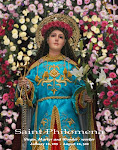
I would like to share something I have read about new liturgical architecture:
"The new style of church architecture, which is hardly new in fact, has also been influenced by the idea that what is sacred is produced by man and for man, and has lost all feeling for the sacred as such. The functionalism that is so characteristic of modern architecture, and that has become the first principle of all building, governs the design of churches as well; they are now conceived in a utilitarian spirit which, while keeping their religious use in view, does not exclude other uses either; hence, the so-called multi-purpose churches that are used as places for non-religious meetings, as concert halls, as shelters for those in strike, etc.
"The ideas of adoration, and of the sacred as something especially separated or set apart, are lost in all this. The new architecture treats the sacred as something diffused throughout the whole of reality; and hence any attempt to localize it in church buildings must be abandoned.
"...Whenever this expansion of the sacred beyond the sacred is attempted, the nature of things is violated, yet again, in a relativistic attempt to detect everything in every other thing, and so to equate everything with everything else.
"The desire to extend the sacred unlimitedly, as if there were no inherent contradiction in talking about something as sacred yet in no sense set apart from anything else, runs into particular difficulties in a Catholic context because of the Catholic doctrine of the Eucharist. This states that there can be a uniquely special presence of God, over and above his universal presence throughout his creation. This is the sacramental presence of the God-Man, body and blood, soul and divinity, who enters the space and time of transient creatures only by means of his body, whether in its earthly or glorified state. . . The Eucharist is the thing that is sacred in its very being; from it, all sacred places, times, persons, and actions flow, and to it they all refer. It is only through the Eucharist that the Divine can be localized. Without belief in the Eucharist, a church must logically be regarded as nothing more than a place where people meet for worship and other ritual activities; it can no longer be regarded as the tabernacle of the Holy One whence all sanctification is derived.
"An over emphasis on the merely functional aspects of a church building diminishes one's sense of the sacred. A church is indeed a place where the faithful meet to pray and to take part in the liturgy, but it has a sacred character even when such functions are not being exercised within it; a sacred building, like every other artistic creation of a religious sort, exists in itself as distinct from the use which may subsequently be made of it. Si hi tacuerint, lapides clamabunt ("If these [people] kept silent, the stones would cry out" - Luke 19:40) is a saying applicable to sacred architecture; or as Ronault said, churches ought to me maisons priantes (Houses that pray), not merely places that people use for prayer, but places which themselves pray. This is true of those medieval churches in which an artist has hidden some beautiful carving or painting high up in a remote corner, away from the light, where nobody sees it, but where all by itself it still sings the glory of God for whom it was made; made by an artist content that his own name too should be similarly forgotten, that the name of God alone might be glorified."
R. Amerio, IOTA UNUM: A Study of Changes in the Catholic Church in the XXth Century, 647-650.










No comments:
Post a Comment